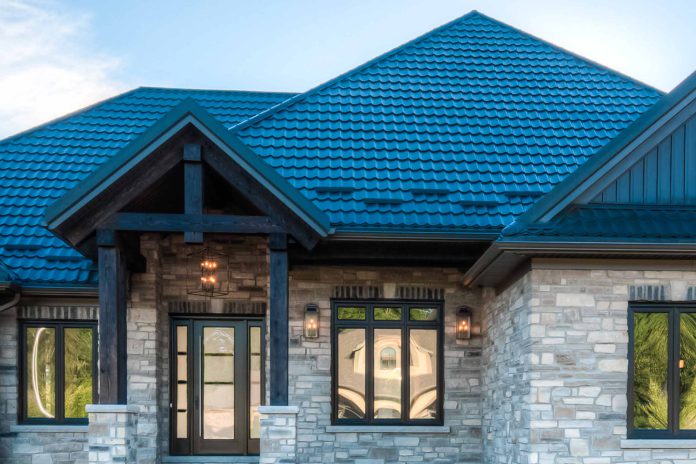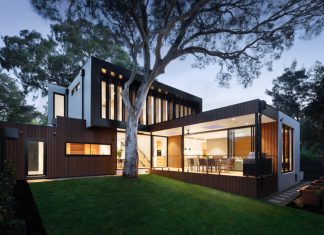Roof lanterns, also known as skylight lanterns or roof lights, are architectural elements designed to bring natural light into interior spaces while adding a distinctive aesthetic appeal to residential and commercial buildings. This guide explores everything you need to know about Roof Lanterns including their types, benefits, installation considerations, maintenance tips, design trends, and real-life applications.
Introduction to Roof Lanterns
Roof lanterns are elevated structures with a glazed roof that sits atop a larger roof or ceiling opening. They feature a framework of bars or mullions that support the glazing, creating a lantern-like appearance when viewed from above. Roof lanterns are often used to illuminate central areas of buildings, such as hallways, stairwells, or extensions, where additional natural light is desired.
Types of Roof Lanterns
Traditional Roof Lanterns
Traditional roof lanterns feature a classical design with timber or metal frames and multiple smaller panes of glass, often arranged in a pyramid or octagonal shape. They are ideal for period properties or buildings where architectural authenticity is desired.
Contemporary Roof Lanterns
Contemporary roof lanterns have sleek, minimalist frames made from materials like aluminum or PVC, with larger expanses of glass for maximum light transmission. They often feature clean lines and modern aesthetics that complement contemporary architectural styles.
Flat Roof Lanterns
Flat roof lanterns are designed to sit flush with flat or low-pitched roofs, offering a minimalist and seamless integration into modern buildings. They provide a frameless look with uninterrupted views of the sky while maximizing natural light penetration into interior spaces.
Pyramid Roof Lanterns
Pyramid roof lanterns have a pyramid-shaped design with sloping sides that meet at a central ridge. They add a striking architectural feature to buildings and are commonly used in extensions, orangery’s, and atriums to create a focal point while enhancing natural light intake.
Benefits of Installing Roof Lanterns
Maximizing Natural Light
Roof lanterns maximize the amount of natural daylight entering a building, reducing the reliance on artificial lighting during daylight hours. They create bright, airy interiors that promote well-being and productivity among occupants.
Enhancing Architectural Aesthetics
The elegant and distinctive design of roof lanterns adds visual interest and architectural elegance to both traditional and contemporary buildings. They serve as focal points that enhance the overall appeal and value of a property.
Improving Ventilation
Roof lanterns can be designed with vent openings or combined with roof windows to provide natural ventilation. This helps regulate indoor temperatures, improve air circulation, and enhance comfort within the building.
Energy Efficiency
By harnessing natural daylight, roof lanterns contribute to energy efficiency by reducing the need for artificial lighting. Properly insulated units also help maintain indoor temperatures, supporting passive solar heating in winter and reducing cooling demands in summer.
Considerations for Installing Roof Lanterns
Roof Structure and Material
The type of roof structure pitched, flat, or domed and its material such as slate, tile, or metal influence the installation and positioning of roof lanterns. Considerations include roof pitch, orientation, and potential obstructions like chimneys or vents.
Glazing Options
Selecting the right glazing material is crucial for optimizing light transmission, thermal performance, and UV protection. Options include double or triple glazing, low-emissivity (low-e) coatings, and tinted or frosted glass for privacy and solar control.
Waterproofing and Sealing
Proper waterproofing and sealing around roof lanterns are essential to prevent water ingress and ensure long-term durability. Choose reputable suppliers and installers who adhere to industry standards for weatherproofing and structural integrity.
Building Regulations and Safety
Ensure compliance with local building regulations, planning permissions, and safety standards when installing roof lanterns. Factors such as fire safety, escape routes, and structural support must be addressed to meet legal requirements and ensure occupant safety.
Installation Process of Roof Lanterns
Site Survey and Design
Begin with a detailed site survey to assess roof conditions, dimensions, and potential installation challenges. Work with an experienced installer or architect to design a layout that maximizes light exposure and integrates seamlessly with the existing roof structure.
Roof Preparation
Prepare the roof surface by ensuring it is clean, level, and free from debris. Installers may need to reinforce or modify the roof structure to accommodate the weight and dimensions of the roof lantern unit.
Installation of Roof Lantern Unit
Position the roof lantern unit according to the design specifications, ensuring proper alignment and weatherproofing. Secure the unit in place and apply sealants or flashing around the perimeter to prevent leaks and maintain a watertight seal.
Testing and Inspection
Conduct thorough testing and inspections to verify the functionality, waterproofing, and safety of the installed roof lantern. Address any installation issues promptly to ensure compliance with standards and manufacturer warranties.
Maintenance Tips for Roof Lanterns
Regular Cleaning
Clean roof lantern surfaces regularly to remove dirt, dust, and debris that can obstruct natural light. Use mild soap and water with a soft cloth or sponge to avoid scratching the glass or frame.
Inspect Seals and Flashings
Inspect seals, gaskets, and flashings around roof lanterns annually to ensure they remain intact and weatherproof. Replace any damaged or worn components promptly to prevent water ingress and maintain insulation efficiency.
Clear Drainage Channels
Keep drainage channels and gutters clear of leaves, debris, and ice to ensure proper water runoff from the roof lantern unit. Blocked drains can lead to water pooling around the roof lantern and potential leaks.
Professional Inspections
Schedule professional inspections of roof lanterns every few years to assess their condition, functionality, and overall performance. Professional maintenance can prolong the lifespan of roof lantern units and identify issues early on.
Design Trends and Innovations in Roof Lanterns
Frameless Design
Frameless roof lanterns offer a minimalist appearance with uninterrupted views of the sky, maximizing light penetration and enhancing architectural aesthetics. They are favored for their sleek, contemporary look and ability to blend seamlessly into modern interiors.
Integrated Technology
Modern roof lanterns can integrate with smart home systems, offering features such as remote control operation, rain sensors, and programmable settings. Smart technology enhances convenience, energy efficiency, and user comfort.
Energy-Efficient Materials
There is a growing emphasis on using sustainable and energy-efficient materials in roof lantern construction, such as low-emissivity glass and thermally broken frames. These materials contribute to green building practices and reduce environmental impact.
Real-Life Applications of Roof Lanterns
Residential Settings
Explore how roof lanterns are used in residential homes to illuminate central areas, create stunning architectural features, and enhance energy efficiency. They transform living spaces into bright, inviting environments that promote comfort and well-being.
Commercial and Public Buildings
Discover examples of roof lanterns enhancing commercial spaces, offices, retail stores, educational institutions, and public venues. They improve natural light intake, aesthetic appeal, and user experience in various architectural settings.
Conclusion
Roof lanterns are more than just sources of natural light—they are architectural features that enhance the beauty, functionality, and energy efficiency of buildings. Whether renovating an existing property or designing a new build, their ability to maximize daylight, improve ventilation, and create visually striking interiors makes them indispensable in modern construction and renovation projects.















